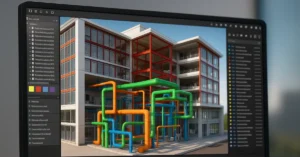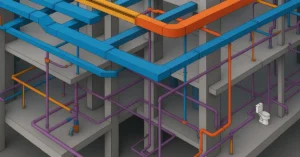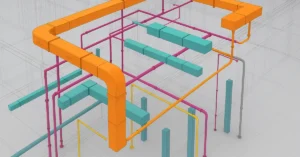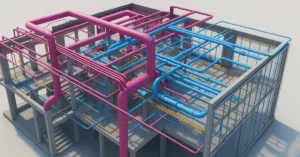Exploring the Most Striking Brutalist Buildings in Mexico City
Mexico City is a dynamic metropolis where diverse architectural styles coexist, from colonial landmarks to futuristic skyscrapers. Among these, Brutalist architecture stands out for its raw concrete aesthetics, geometric precision, and imposing structures. Whether admired or criticized, these buildings reflect the city’s mid-century urban expansion and architectural experimentation. This guide explores the most iconic Brutalist buildings in Mexico City and their significance.
What is Brutalist Architecture?
Brutalism, which emerged in the mid-20th century, is characterized by raw concrete (“béton brut” in French), bold geometric shapes, and functional design. Initially embraced for civic and institutional projects, it became a defining style for modern urban development worldwide. In Mexico City, Brutalism played a key role in post-war modernization efforts, resulting in striking structures that continue to shape the urban landscape.
Mexico City’s Must-See Brutalist Buildings
1. Secretaría de Comunicaciones y Transportes (SCT) Headquarters
Location: Eje Central Lázaro Cárdenas, Mexico City
Architect: Pedro Ramírez Vázquez
Year: 1970
One of the most imposing Brutalist structures in Mexico City, the SCT Headquarters reflects the functional and monolithic essence of Brutalism. The massive concrete volumes and sharp angles create a fortress-like presence, symbolizing the strength and resilience of Mexico’s infrastructure development.
2. Museo Tamayo
Location: Paseo de la Reforma, Mexico City
Architects: Teodoro González de León, Abraham Zabludovsky
Year: 1981
Museo Tamayo is an outstanding example of Brutalism blended with Mexican architectural traditions. Its angular concrete forms seamlessly integrate with the surrounding Chapultepec Park. The use of exposed concrete and minimalist geometry makes it a perfect representation of Brutalist principles adapted to a cultural institution.
3. Unidad Habitacional Nonoalco-Tlatelolco
Location: Tlatelolco, Mexico City
Architect: Mario Pani
Year: 1964
This massive housing complex, designed by Mario Pani, embodies the Brutalist philosophy of large-scale, functional urban planning. Built to accommodate thousands of residents, its rigid concrete facades and repetitive geometric patterns define the brutal yet pragmatic nature of the style.
4. Centro Cultural Universitario (UNAM)
Location: Universidad Nacional Autónoma de México, Mexico City
Architects: Teodoro González de León, Abraham Zabludovsky
Year: 1976
A key part of UNAM’s campus, the Centro Cultural Universitario is a striking Brutalist structure that houses various cultural venues. The heavy concrete forms and strategic voids in its design create a play of light and shadow, emphasizing the monumental qualities of the building.
5. Biblioteca México (José Vasconcelos Library)
Location: La Ciudadela, Mexico City
Architect: Abraham Zabludovsky
Year: 1987
Although later renovations introduced glass elements, the original Biblioteca México is a Brutalist gem. Its solid concrete construction, stark geometric forms, and monumental presence make it a significant architectural landmark in the city.
The Influence of Brutalism on Mexico City’s Urban Landscape
Mexico City’s adoption of Brutalist architecture was driven by its rapid urbanization and modernization efforts. The city required durable, cost-effective structures that could accommodate government institutions, educational facilities, and large housing projects. Brutalist buildings became symbols of national progress, blending functionality with striking aesthetics.
Preservation vs. Demolition: The Debate Over Brutalism
Brutalist buildings in Mexico City, like elsewhere, often face criticism for their stark and imposing appearance. However, as architectural appreciation evolves, efforts to preserve and restore these structures are gaining momentum. Many now recognize their historical and cultural value, advocating for their conservation rather than demolition.
Why You Should Appreciate Brutalism in Mexico City
Brutalist architecture in Mexico City tells a compelling story of growth, resilience, and innovation. These buildings, once seen as cold and uninviting, are now celebrated for their boldness and craftsmanship. Exploring Mexico City’s Brutalist landmarks offers a deeper understanding of the city’s architectural evolution and urban identity.
For architecture lovers, a self-guided tour of these structures provides a unique way to experience the raw beauty of Brutalism. From cultural institutions to government headquarters, these buildings continue to shape Mexico City’s landscape with their uncompromising aesthetic.
Final Thoughts
Brutalist buildings in Mexico City are more than just concrete monoliths—they are testaments to an era of ambitious architectural experimentation. Whether admired or debated, they remain integral to the city’s skyline and identity. As Brutalism gains renewed appreciation, these structures will continue to stand as bold expressions of Mexico City’s architectural heritage.
If you’re interested in learning more about architecture firms in Europe, check out this comprehensive list of the top 50 firms compiled by Archgyan. From innovative startups to long-established industry leaders, this list has it all. Take a look and discover some of the most inspiring and influential architecture firms in Europe today.
If you’re interested in architecture and want to learn more about this amazing field, subscribe to our podcast on youtube
For more SketchUp tutorials, head to https://www.sketchupguru.com










